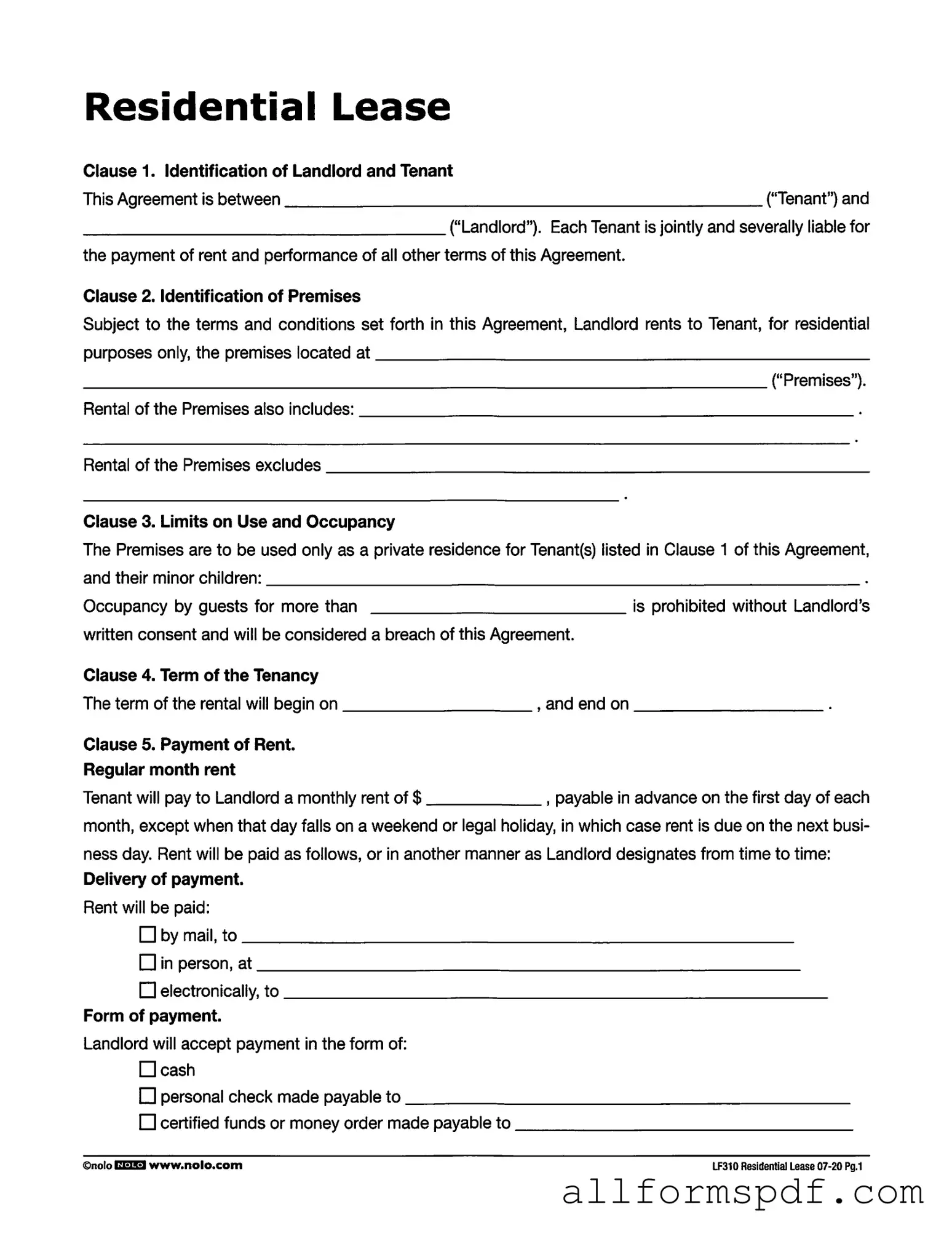When filling out the LF310 Residential Lease form, many individuals make critical mistakes that can lead to misunderstandings and disputes. One common error is failing to properly identify the Landlord and Tenant. It is essential to include the full names of both parties in Clause 1. Omitting this information can create confusion about who is responsible for the lease terms.
Another frequent mistake involves neglecting to specify the Premises address in Clause 2. This section should clearly state the rental property’s location. Without this detail, it can be difficult to enforce any agreements related to the lease. Always double-check that the address is complete and accurate.
Many people also overlook the term of the tenancy in Clause 4. Clearly stating the start and end dates of the lease is crucial. Failing to do so may lead to assumptions about the duration of the rental agreement, which can result in legal complications later on.
In Clause 5, the payment of rent section often contains errors. Tenants should ensure that the amount of rent is filled in correctly and that the payment methods are clearly outlined. Additionally, not specifying the due date for rent payments can lead to disputes over late fees.
Another mistake is related to the security deposit in Clause 8. Tenants must accurately state the amount of the deposit and understand the conditions under which it can be withheld. Misunderstandings about the security deposit can lead to significant conflicts when moving out.
Finally, many individuals fail to understand the implications of the prohibition of assignment and subletting in Clause 10. Tenants should be aware that subletting without written consent can lead to termination of the lease. It is vital to read this clause carefully and seek clarification if needed.
